MENOMONEE FALLS, WIS.–Harley-Davidson has six major facilities in the U.S.—the corporate headquarters at Juneau Avenue in Milwaukee, a vehicle and powertrain operations plant in Kansas City, Missouri, another vehicle operations plant in York, Pennsylvania, and three in Wisconsin: the product development center in Wauwatosa, a manufacturing and finishing facility in Tomahawk, and a powertrain operations plant in Menomonee Falls. Each of the plants offer tours to the public, and just before Labor Day weekend, the Menomonee Falls plant on Pilgrim Road offered special self-guided tours as part of the Harley-Davidson 110th Anniversary Celebration in Milwaukee. And on this special weekend, visitors could also check out the brand-new 2014s on display and go on new-model demo rides.

When I learned that media tours were being given Thursday morning, and that I’d be allowed to take photos inside the plant (photography is forbidden any other time of the year), I decided to head out from Milwaukee to Menomonee Falls. After a quick 19-mile ride from the Harley-Davidson Museum, which served as the hub of the 110th celebration, and when my riding partner, fellow moto-journalist Steve Lita (thanks for leading the way, Steve!) and I pulled up to the plant on Pilgrim Road, we were stunned by the huge line of people that snaked around the building and into one of the parking lots.

We signed in at the reception center and while waiting for a busload of media folks to arrive; we were fortunate to make the acquaintance of Dan Franklin, one of the two directors of operations. Dan oversees the powder coating and machining functions, and is a wealth of knowledge regarding the plant. We took advantage of the wait time to drill Dan with questions about various Harleys, past, present and future, as well as plant operations.
Dan told us that Harley-Davidson plants have undergone a major transformation, implementing a continuous improvement system that, among other advancements, assures consistency across all facilities. Pilgrim Road operates at an astounding 96-percent productivity rate for first-pass yield. I asked about the increasing use of robotics and was told that the use of robotics and automation goes up about 4 or 5 percent every year. Steve asked how long it takes the plant to tool up for new models, particularly the RUSHMORE project for 2014, and Dan said that they started tooling up for water-cooled heads almost a year back, launching in the late May/early June timeframe.
Up to 69 variations of powertrains (engines and transmissions) spanning the Twin Cam A and B (96″, 103″ and 110″) and Middleweight (XR/XL 883cc and 1200cc) lines are produced at Pilgrim Road. Dan explained it simply: “We make the heart of the vehicle.”
By then, the busload of journalists had arrived and we all piled into a classroom for the start of our tour—a formal presentation giving an overview of the plant. The 912,000-square-foot facility, situated on 63 acres, was opened by Briggs & Stratton, another American manufacturing icon, in 1979, and Harley-Davidson purchased the property in 1996. (Briggs & Stratton now leases a significant amount of space in the building for some of their operations.) Approximately 1,000 people are employed for various job functions that involve many aspects of engineering, support and operations, working two shifts for assembly and three for machining. Plant “customers” are the York and Kansas City Vehicle Operations facilities, Brazil and India CKD (Complete Knock Downs) Operations and Harley’s Parts and Accessories division.

After the presentation, we were escorted onto the manufacturing floor, stopping first to don safety glasses. The plant was in full production, and as we proceeded, our tour guides shared more information with the group. The assembly line has two parallel loops and a 78-second cycle time, with a powertrain offloaded every 39 seconds. A complete engine takes between two and two-and-a-half hours for a Twin Cam and three to three-and-a-half hours for a Sportster (the production demands for Sportsters aren’t as high).
We saw various aspects of the assembly, machining and support processes. There were boxes and racks and stacks of rotors and stators; lines of rocker boxes, heads and cylinders. There were cases, plates, gears, cams, shafts and flywheels. Areas were set aside for heat treating, cold testing, casting impregnation and powder coating. I found myself on a side mission to find various components that made up each of my three Harleys, made somewhat easier by the signs above most workstations and the labeling on the carts. The sheer magnitude of the operation was nearly overwhelming, and our fascination with the various manufacturing processes made it hard for us to leave.
There’s no denying the emotional connection most Harley owners have with their machines, so if you’re moved to see how and where your Big Twin or Sportster was born, the Pilgrim Road plant offers free 30-minute factory tours on Mondays, and the more in-depth Steel Toe tours Wednesday through Friday for $38 ($32 if you’re a museum member).



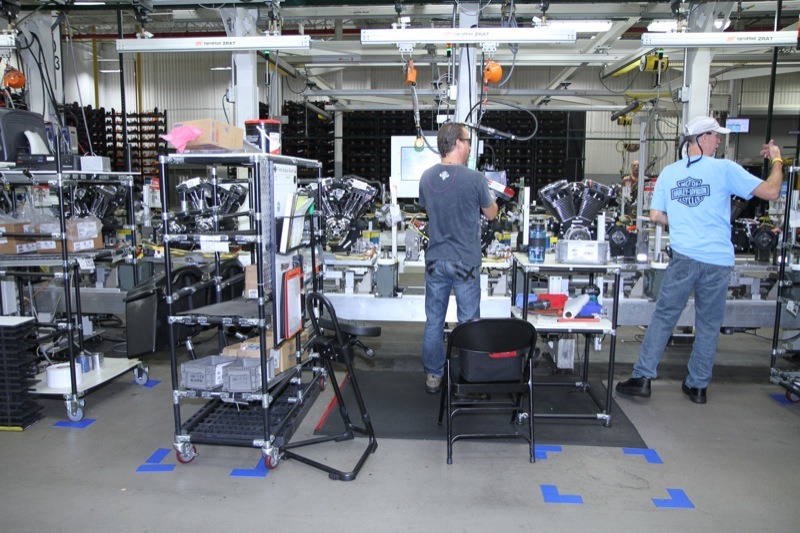
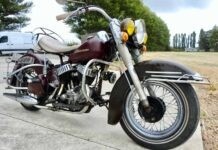

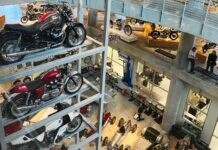
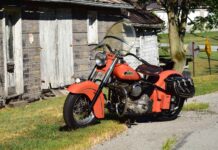
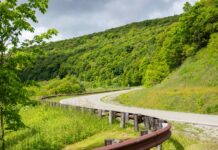











I wish to see and visit one of Harley Davidson’s facilities. I’m a big fan of their big bikes!